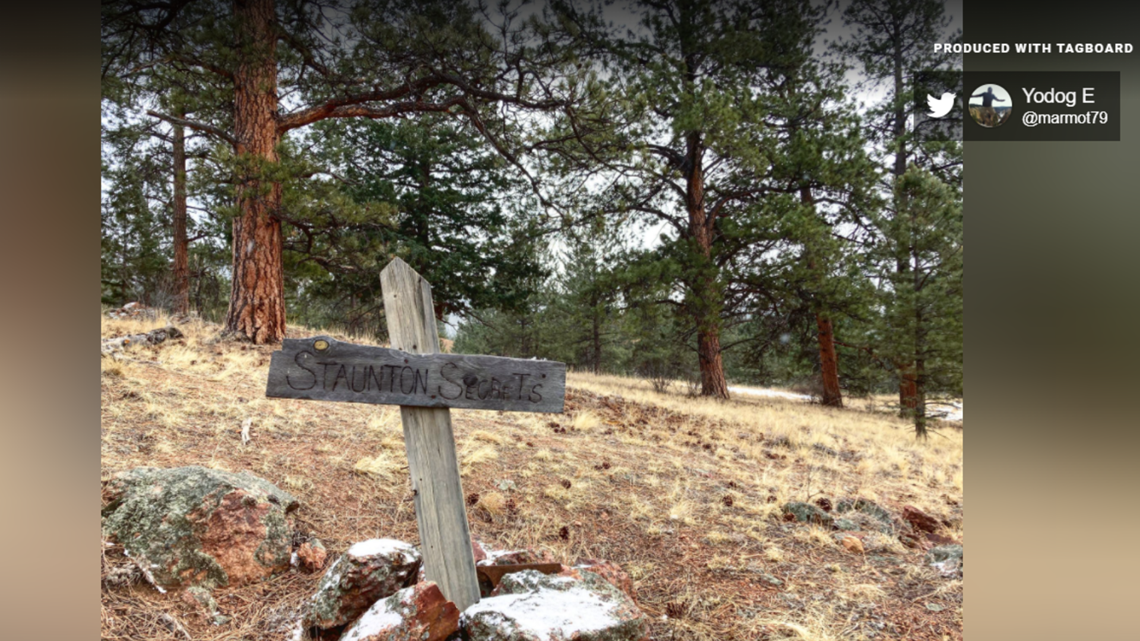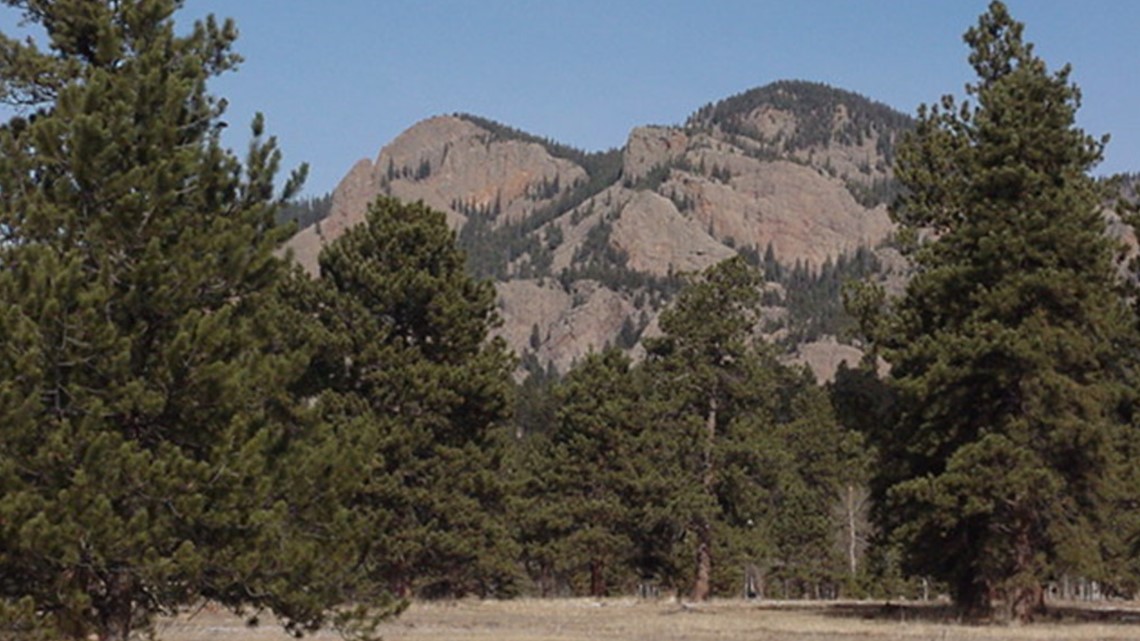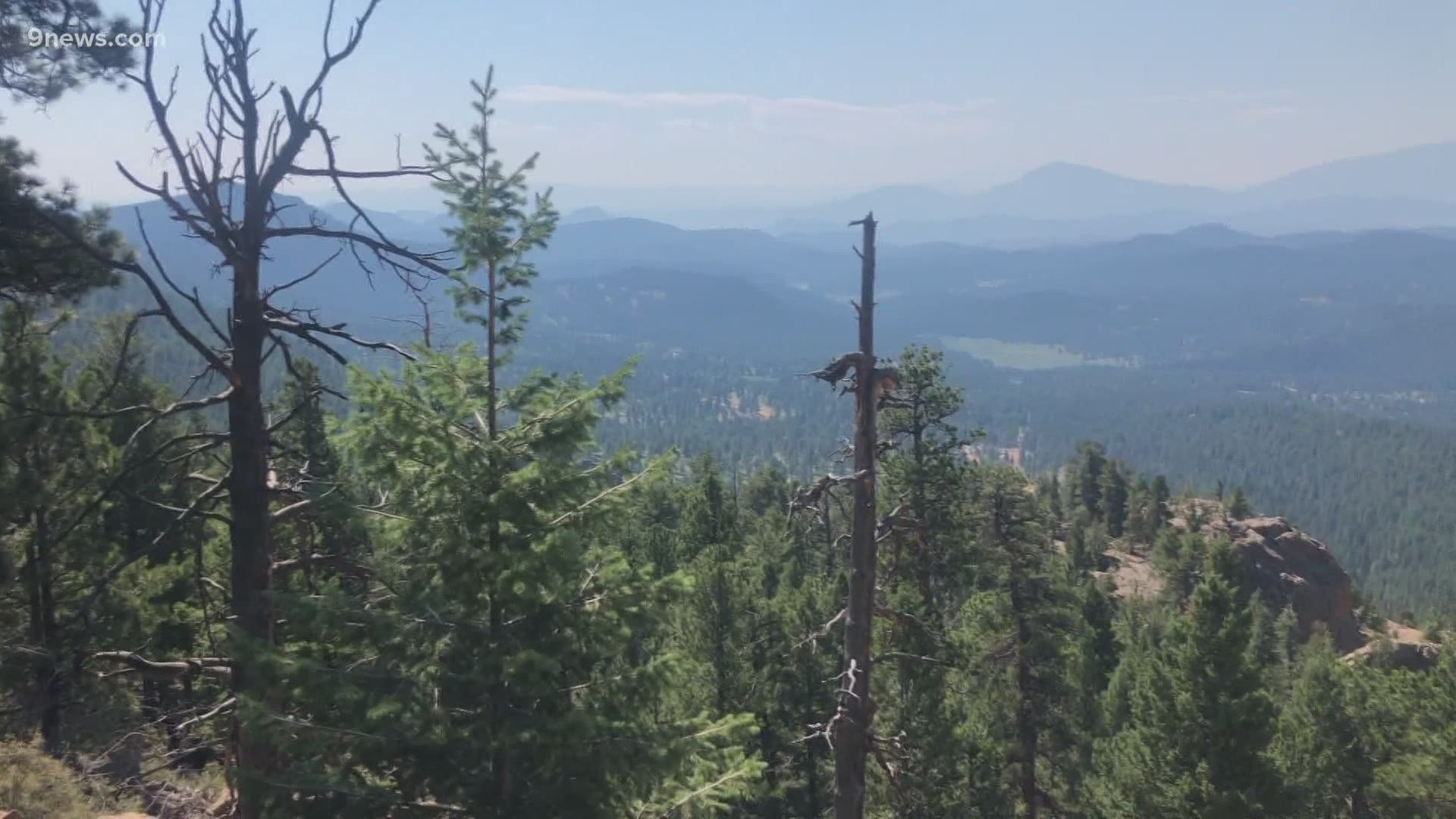COLORADO, USA — History begins with stories. Some have not been told or have changed over the years. It's safe to assume there still could be some untold tales left in the mountains and valleys in Colorado.
There's a sign in Staunton State Park that represents an untold story. It's a wooden sign along the Chase Meadows Trail held up by a pile of rocks that says "Staunton Secrets."


The short explanation for the sign is that when volunteers were building that trail, they found several pits along the way. Colorado Parks and Wildlife (CPW) said the pits might have been for trash collection in the early 1900s. Or maybe they were root cellars to store meat and vegetables. CPW and historians didn't know for sure. Hence the secrets.
"It's certainly one of those where volunteers as they were building the trail put up that sign and wood, burned it together and said you know what, let's keep these things a secret," said Zach Taylor, Staunton State Park manager.
The secrets in Staunton State Park go deeper than that.
The park is one of the newer state parks in Colorado. The 3,900-acre state park opened in 2013. It's west of Denver and just north of Highway 285 near Conifer, featuring cliffs, streams and a waterfall.


The park's beginnings go back to 1986, when Frances Hornbrook Staunton donated her family's land to the state's park system. She wanted people to visit to the Staunton State Park area and enjoy the land like she and her family did.
Frances' parents were doctors from West Virginia who moved to Denver in the early 1900s. The couple had a practice in Denver and in the Staunton area. Some of their patients were Native American families who bartered beadwork, pottery, jewelry and rugs to show their appreciation and pay for services, according to CPW.


Taylor explained that when the Stauntons moved to Colorado, people were only allowed to get 60-acres through a homestead. Their land expanded to 1,700-acres when Frances gave the state the land in the 1980's.
"When you look at 60 years of age associated with the property, there are some secrets of how they may have acquired that much property," Taylor said. "A lot of it we don't know. A lot of it they have not told us the total background story. Some of it could have either been good tidings from patients that lived on the properties and as they passed away they left land to Stauntons, or land was donated, or the Stauntons purchased the land."
CPW, along with historians they worked with, surmised that Swedish and Norwegian loggers came through the area before the Stauntons purchased the land.
Indigenous peoples were there before that. CPW especially doesn't want to damage any of that history.
"We like to recognize obviously before the Stauntons there were indigenous peoples and Native Americans that lived and called that land home," Taylor said. "We want to leave it a secret and provide that as its still wilderness. An area that there is unknown."
There is always room to dive deeper into these stories. Many need to be told for Coloradans to understand our history. But there is something special about preserving the mystery in Staunton State Park. Some secrets have to be kept so people can go and experience the wilderness themselves.
"If you look at the progress of the United States itself, Colorado, the Midwest was kind of bypassed," Taylor said. "You get the Nebraska cornfields, the Kansas cornfields, the Rocky Mountains, and then gold of California. To have some of these folks that settled down here and made this their home, it is kind of a neat little niche of ours to provide to people of Colorado and those who visit."
To learn more about Staunton State Park, visit the visitor center or go on CPW's website.
SUGGESTED VIDEOS: Local stories from 9NEWS

